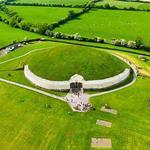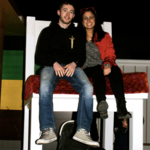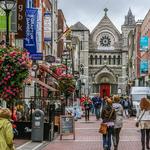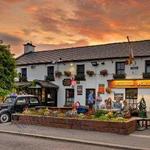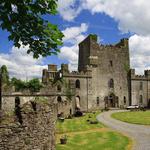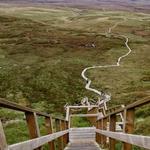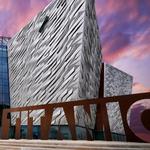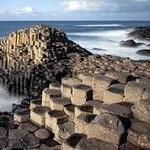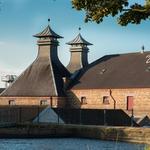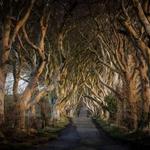Ariel & Jason

Things To Do
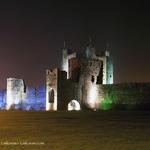
Trim
Trim is the location of our wedding. Marcies Reagan's bar by the River Boyne is a picturesque Irish pub. Very cosy and worth a visit. Ireland's oldest bridge is 3 minute walk away from the hotel and across the road is Trim Castle which was featured in the movie Braveheart. Beside the castle is the start of a riverwalk that goes all the way to Newton Abbey, which was once Ireland's biggest abbey, along the River Boyne which is a part of a lot of Irish mythological tales. Keep an eye out for BRÚ beer stocked around the town which is brewed in Trim.
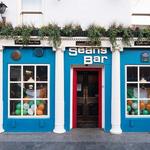
Sean's Bar
Sean’s bar is the oldest bar in the world! Can you imagine a bar that was opened over 1100 years ago? Archaeological records have found that the walls of Sean’s Bar have been around, and serving, since 900 AD. Further, there are records of every owner of the pub back to its 10th-century founding!
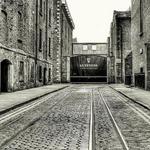
Guinness Storehouse
Even if you don't like Guinness, you should still go on this tour. They tell you the history of Guinness and how it's made. Definitely a must see! And at the end is the Gravity Bar where you can have a pint of Guinness while enjoying a 360 degree view of Dublin.
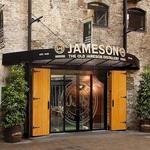
Jameson Distillery Bow St.
Go for a distillery tour, a premium whiskey tasting experience, learn how to blend your own take-home whiskey, master the craft of whiskey cocktail making here in our home or draw whiskey straight from a Jameson cask in Dublin's only live maturation warehouse.

Trinity College
It is one of the seven ancient universities of Britain and Ireland,[10] as well as Ireland's oldest surviving university. The building facade of Trinity College is among many constructed since the foundation of the College on March 13th, 1592. Check out the library which contains the Book of Kells!
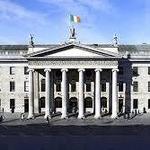
GPO O'Connell Street
The General Post Office was the headquarters of the Irish Rebellion of 1916 (Easter Rising). It was where the rebels occupied and fought a battle against the British forces in Dublin. There are still marks on the outside of the building and noticeable bullet holes. By touching these holes you are experiencing some history and it costs nothing so why not! Inside is the GPO Witness History which is a brand new permanent visitor attraction. This focuses on the 1916 rising, the aftermath of this rebellion and also how Ireland has developed since. Experience the events from an eyewitness perspective of active participants on both sides and bystanders caught in the middle.
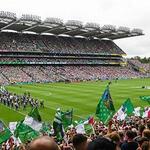
Croke Park and Ericsson Skyline Tour
Home to GAA and Irish Gaelic games. Croke Park has been at the heart of Irish sporting life for over 100 years and is actually the third largest stadium in Europe. Its size is only part of its greatness, however, as you’ll discover on this eye-opening, access-all-areas tour which includes going pitch side through the tunnel, seeing the dressing rooms and VIP area. Also located on the roof of the stadium is a thrilling walkway which is actually Dublin’s highest open-viewing platform and offers breathtaking panoramic views of Ireland’s vibrant capital from the mountains to the sea.
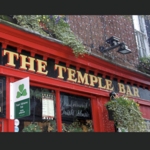
Temple Bar
is a busy riverside neighbourhood, spread over cobbled pedestrian lanes. Crowded pubs host live folk music and restaurants. Quirky boutiques stock clothes and crafts by local designers. Also Ireland's most famous 'tourist bar' & The largest collection of rare whiskeys in the country. The Temple Bar is one of the most famous pubs in Dublin. It's history goes back to 1599 when Sir William Temple, a renowned teacher and philosopher, built his house and gardens here on newly reclaimed land around Temple Bar.
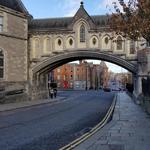
Dublina - Experience Viking and Medieval Dublin
Dublinia is located at the crossroads of the medieval city at Christchurch, where modern and old Dublin meet. Dublinia is history brought to life in an exciting way for all to engage, learn and share. With our four exciting exhibitions, you can visit Viking and Medieval Dublin, see Archaeology as a History Hunter and climb the medieval St Michael’s Tower. At Dublinia, see Dublin from a new perspective and come away knowing more about its citizens throughout the ages!
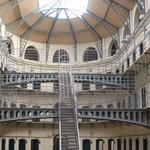
Kilmainham Gaol
This bleak old jail was notorious in the 19th century for its harsh treatment of prisoners. Many Irish revolutionaries, including the leaders of the 1916 Easter Rising, were imprisoned and executed in the prison by the orders of the UK Government.
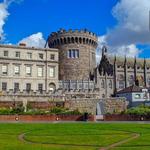
Dublin Castle
Dublin Castle was for 700 years the seat of British power in Ireland. Today you can still view the remains of the 13th century structure as part of the guided tour. The present Dublin Castle dates from the mid 1700's and today is used by the Irish Government for state events such as the inauguration of the Irish President and state banquets for visiting dignitaries.
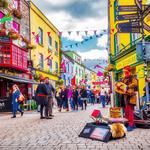
Galway City
Galway, a harbour city on Ireland’s west coast, the city’s hub is 18th-century Eyre Square, a popular meeting spot surrounded by shops and traditional pubs that often offer live Irish folk music. Nearby, stone-clad cafes, boutiques and art galleries line the winding lanes of the Latin Quarter, which retains portions of the medieval city walls. Check out the main street, Shop Street, a cobble stoned pedestrian street which has some of the best pubs and food. Still a very traditional city, it is a great place to experience Irish culture, music and has many tours, some listed below.
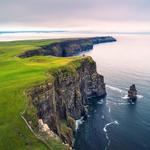
Cliffs of Moher (Tours daily from Galway)
Cliffs of Moher see amazing views – Ireland’s No. 1 Tourist Attraction. It's windy though so dress warmly! Featured in Harry Potter movies. Visit the link for tours that leave Galway daily. The tour also stops at the Burren - home to 75% of Ireland’s native flora - & location of numerous ancient monuments many of which we visit including the 5,800 year old Poulnabrone Dolmen and the famous Celtic Crosses (Irish High Crosses)
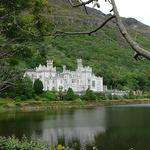
The Connemara, Kylemore Abbey & Cong Village Tour
To see hidden Ireland off the main tourist track this tour is a must with the first stop at Ross Errily Friary- a hidden but atmospheric 14th-century monastery before entering Cong Village. You will stroll the town famous for being the location for the 1950s classic movie, ‘The Quiet Man’- or simply have a coffee on the edge of Lough Corrib- the largest lake in the Republic of Ireland and seeing Kylemore Abbey.
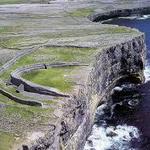
Aran Islands
Aran Islands are a group of three islands located at the mouth of Galway Bay. Because of its Celtic and Christian heritage, the Aran Islands has an unusually high number of ruins and sacred sites. Tours run daily also from Galway by the same company who do the Cliffs of Moher and Connemara tours above. Check out Dun Aengus, a Bronze Age and Iron Age fort on the edge of a 100 metres (330 ft) cliff overlooking the Atlantic Ocean on Inishmore. Also a part of the Gaeltacht (an Irish language speaking area, don't worry they are fluent in english too)
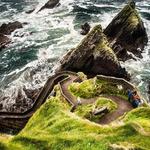
Dingle
Dingle is a town in County Kerry, Ireland and is claimed to be one of the most beautiful locations in Ireland. The only town on the Dingle Peninsula, it sits on the Atlantic coast. Dingle is situated in a Gaeltacht (Irish language speaking) region. An adult Bottlenose dolphin named Fungie has been courting human contact in Dingle Bay since 1983.
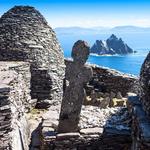
Ring of Kerry & Skellig Michael
he Ring of Kerry is a scenic drive around the Iveragh Peninsula in southwest Ireland’s County Kerry. Skellig Michael, a rocky island with an abandoned 7th-century Christian monastery, (recently featured in Star Wars movies) is a major destination point, with several boats from Portmagee making the 12km crossing during the warmer months.
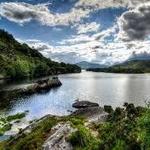
Killarney
Killarney National Park was the first national park established in Ireland, created when Muckross Estate was donated to the Irish state in 1932. The park has since been substantially expanded and encompasses over 102.89 km2 of diverse ecology, including the Lakes of Killarney, Oak and Yew woodlands of international importance, and mountain peaks.
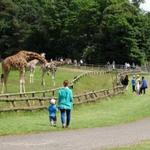
Fota Island
Fota Wildlife Park is a 100-acre wildlife park located on Fota Island, near Carrigtwohill, County Cork, Ireland. See a Kangaroo hop in front of you or get close to a Ring-tailed Lemur! Fota Wildlife Park is only 20 mins from Cork and is a great day out for all the family.
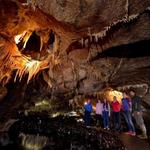
Marble Arch Caves
The Marble Arch Caves is host to one of the finest show caves in Europe. Visitors are guided through a fascinating natural underworld of rivers, waterfalls, winding passages and lofty chambers while stunningly beautiful cave formations glisten all around.
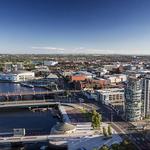
Belfast city
Belfast is the capital and largest city of Northern Ireland, standing on the banks of the River Lagan on the east coast of Northern Ireland. It is the 12th-largest city in the United Kingdom[12] and the second-largest on the island of Ireland. Belfast suffered greatly in the Troubles in the 1970s and 1980s. You can see a lot of history here, like the Peace Walls that were built by the British army to separate the Nationalist Catholic neighbourhoods from predominantly Loyalist and Unionist Protestant neighbourhoods. You can see beautiful murals depicting the suffering and history of the city. See below for the Titantic Museum.
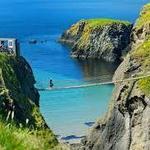
Carrick-a-Rede Rope Bridge
Carrick-a-Rede Rope Bridge is a famous rope bridge near Ballintoy. The bridge links the mainland to the tiny island of Carrickarede (from Irish: Carraig a’ Ráid, meaning “rock of the casting”). It spans 20 meters (66 ft) and is 30 meters (98 ft) above the rocks below.
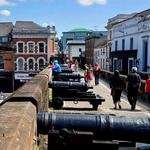
Derry
Derry is the second-largest city in Northern Ireland and the fourth-largest city on the island of Ireland. Where the show "Derry Girls" is based. There is lots of history in this city and is the only remaining completely intact walled city in Ireland which one can walk on top of. Derry has beautiful murals painted on the walls of the town and the buildings.
